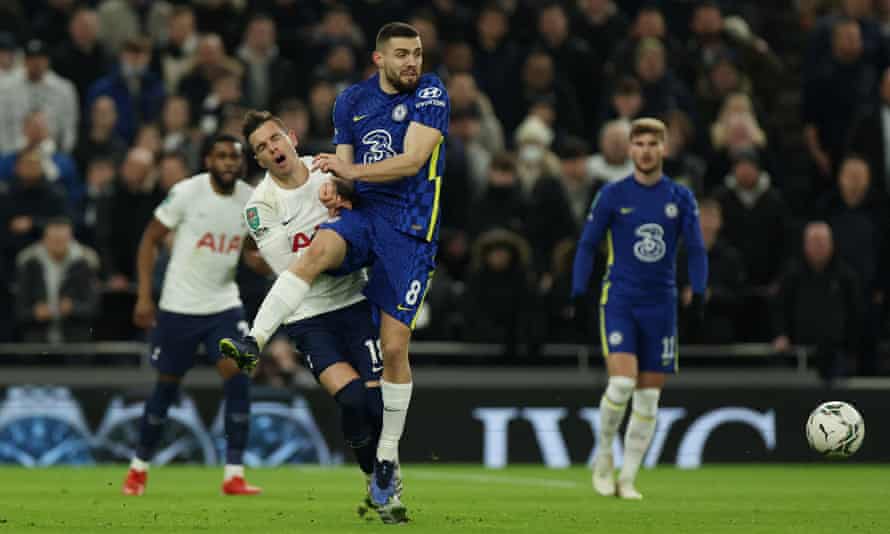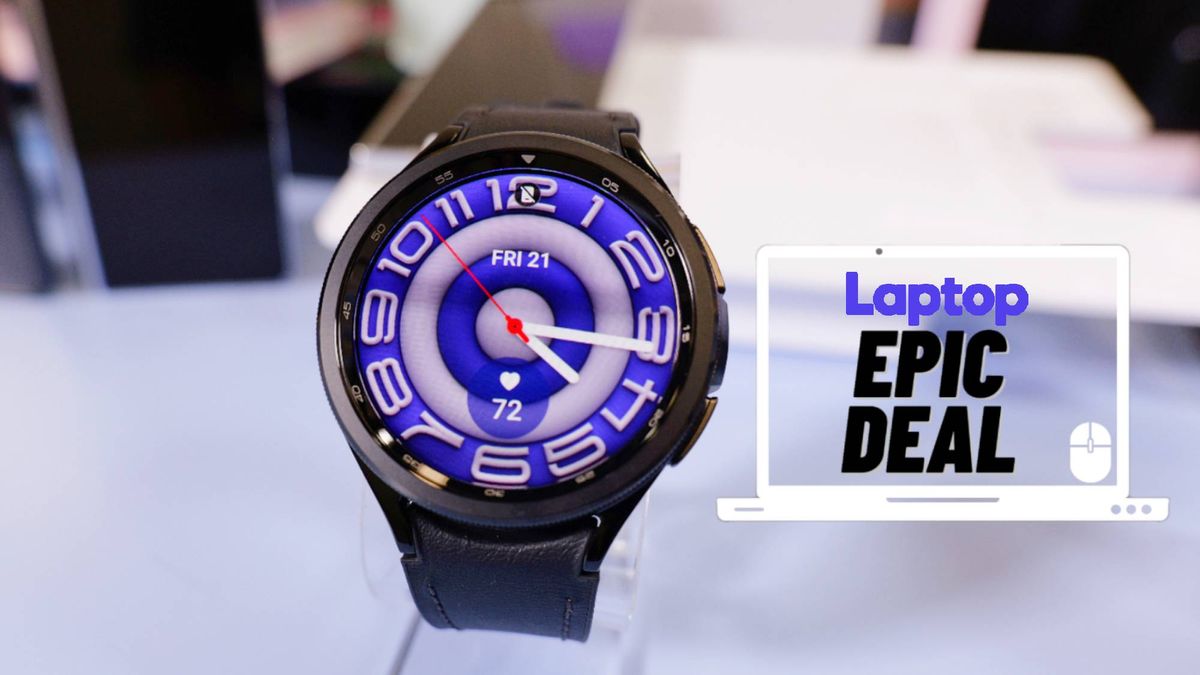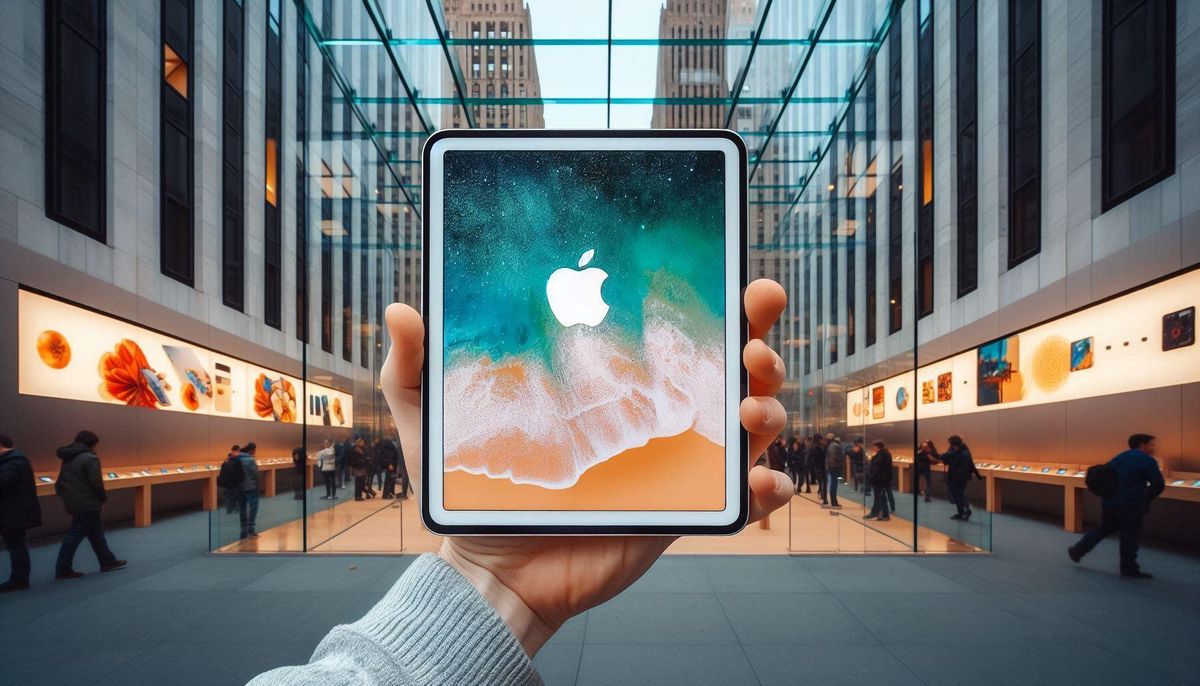
There was a moment midway through the first half of this Carabao Cup semi-final second leg, with Chelsea already 1-0 up, when Jorginho and Mateo Kovacic just seemed to stop, shrug, and pass the ball three times between them: a kind of shared footballing shrug, a raise of the midfield eyebrows. We can do this all day you know. You’re on your own time here.
This was a game Tottenham did their best to chase, and with some urgency in the second half. But they were up against opponents who seemed always to be holding them at arm’s length, a palm flat against their forehead, arms windmilling in the space between.
There was no lack of effort from Antonio Conte’s team, no lack of shots, no lack of chaotic energy. But in the end Chelsea controlled this game without having to raise their pulse, and did so via the most diligent of midfield throttlings from that Kovacic-Jorginho fulcrum.
Kovacic-Jorginho, Jorginho- Kovacic: this wasn’t always a thing. Frank Lampard tended to rotate the two, perhaps seeing a sameness, a lack of thrust, an absence of goal threat.
Under Thomas Tuchel they tend to play together. And work has been done here, spaces allocated, movements drilled. Tuchel went with a back four in north London, with Jorginho and Mateo Kovacic the twin midfield prong, valve, and rotational ball carousel just in front. And at times Chelsea’s twin midfielders just seemed to orbit one another like amorous hummingbirds. Sometimes they kept the ball in their allocated space, like a whispered secret, passing to each other to rest, change the angle, find a space.
Nobody is “covering every blade of grass” here or racking up the tackles. This is instead about positioning and control. And under Tuchel Kovacic and Jorginho have become one of those brilliantly frictionless things that you only notice when they’re not there, when suddenly that hum from the air conditioner breaks the silence and you realise it’s still beavering away.
For long periods they sat like a fulcrum: Jorginho stays, Kovacic moves five yards on, before rotating the roles, covering that midfield like two men roped together on a mountain. Between them Jorginho-Kovacic had 128 touches in 45 first‑half minutes, or a touch every 14 seconds while the ball was in play. There are, you know chaps, 20 other players on that pitch.
By the end of that half Chelsea’s central duo had completed 111 passes. Harry Winks and Pierre Emile-Højbjerg made 38 in the same time. The difference is in part tactical: Tuchel wants to keep the ball. Conte demands quick, vertical passing from his midfielders. But it’s not just tactical. It’s also a matter of, craft, impact, patterns, pitch-status, presence.

There are no doubt weaknesses to this system and limitations in the game of both players, days when they will be circumvented by opponents good enough to get close. But it is also 18 months since Chelsea lost a game with both Jorghino and Kovacic on the pitch for the whole 90 minutes. What these two fine moving parts offer is control; but also an emblem of just how deep the investment in this squad goes, how high spec, how finely engineered even these everyday working parts have to be to compete at that elite level.
Conte had a meeting to discuss acquisitions and departures before this game, a chance, it is to be hoped for a little upwards-management. “It was good to tell the truth,” he said afterwards. Hopefully that truth included some simple sums.
Jorginho cost £50.4m, aged 26. Kovacic cost £40m, major fees for un-starry, boiler room players. By contrast Pierre-Emile Højbjerg cost £15m. Harry Winks was an in-house product. There are levels here. On 52 minutes Winks found himself in space in the centre circle, with just a simple pass required to put Kane in on goal. He spanked the ball out of play – not because he can’t make the pass, but because every moment of his game to that point had been spent chasing, harrying, trying to find a moment to let the mercury settle.
And that sense of never quite landing a blow was the defining note. The Tottenham Hotspur Stadium was a wonderful spectacle at kick-off, the vast craning kop seething with its own massed barks, cheers, yelps, songs.
It was from a simple switch of play, Ben Davies finding Matt Doherty, that Spurs first chance came, a free-kick on the edge of the box. One day, when all this has passed, a forensic deep-dive is required into exactly who told Harry Kane, and at exactly what point, that he was good at taking free-kicks. As ever Kane paused, took a breath, felt the energy lines settle, found his inner peace, opened his footballing third eye, and smashed it into the wall.
The Fiver: sign up and get our daily football email.
The game’s only goal arrived not long after. It came straight from a corner, headed in by Antonio Rüdiger, who stood his ground on the edge of the six-yard box as Pierluigi Gollini came cartwheeling out. This was decisive, assertive, aggressive goalkeeping from Gollini. He just missed the ball.
Spurs had their moments, but there was something ragged even in their best attacks in the absence of Son Heung-min. Chelsea will now play another final, Spurs reflect on another near-miss. The reasons why are there in the detail. This isn’t a mentality thing, a hex, a witch’s curse. Chelsea simply have a better-resourced, more powerful squad – evident here in that note of high-grade control.






